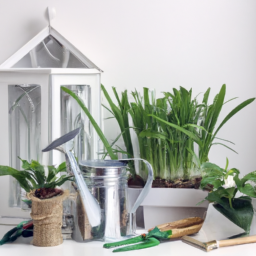
Factors to Consider When Selecting a Plant Stand for Your Space
Choosing the right plant stand for your space can be a daunting task, especially with the wide variety of options available in the market. However, by considering a few key factors, you can ensure that you make a well-informed decision that not only enhances the beauty of your plants but also complements your overall decor. In this guide, we will walk you through the essential factors to consider when selecting a plant stand for your space.
1. Size and Shape
The size and shape of the plant stand are crucial factors to consider as they determine how well it will fit into your space. Start by assessing the available space in your home or office where you intend to place the plant stand. Consider the height, width, and depth of the area to ensure that the stand you choose fits perfectly without overwhelming the surroundings.
Additionally, take into account the size of your plants. If you have larger plants, you will need a plant stand that can accommodate their weight and size. On the other hand, if you have smaller plants, a compact stand might be more suitable. The shape of the stand should also complement the shape of your plants. For instance, if you have tall, slender plants, a vertical stand with multiple tiers would be ideal.
When considering the size and shape, it’s important to strike a balance between functionality and aesthetics. A stand that is too small may not provide adequate support for your plants, while one that is too large may overpower the space and look out of place.
2. Material and Durability
The material of the plant stand not only affects its durability but also contributes to the overall aesthetic appeal. Common materials used for plant stands include wood, metal, and plastic. Each material has its own unique characteristics and advantages.
Wooden plant stands are popular for their natural warmth and versatility. They can seamlessly blend with various interior styles and provide a timeless look. However, ensure that the wood is treated or coated to protect it from moisture damage, especially if you plan to place the stand in a humid environment.
Metal stands, such as those made of wrought iron or stainless steel, offer a more contemporary and sleek appearance. They are sturdy and can withstand heavy pots, making them suitable for larger plants. However, be mindful of the potential for rusting if the stand is exposed to moisture.
Plastic stands are lightweight and affordable, making them a practical choice for those on a budget. They are also resistant to moisture, making them suitable for outdoor use. However, plastic stands may not offer the same level of durability and aesthetic appeal as wooden or metal stands.
3. Style and Design
The style and design of the plant stand play a significant role in enhancing the overall visual appeal of your space. Consider the existing decor and the atmosphere you want to create. Do you prefer a modern, minimalist look or a more rustic and traditional vibe?
If you have a contemporary interior, opt for a plant stand with clean lines and a sleek finish. A minimalist design with simple geometric shapes can add a touch of elegance without overpowering the space. On the other hand, if you have a more eclectic or bohemian style, consider a stand with intricate patterns or unique detailing to create a focal point.
Furthermore, consider the color of the plant stand. It should either complement or contrast with the colors in your space. A stand in a contrasting color can create a striking visual impact, while one in a similar color can create a harmonious and cohesive look.
4. Versatility and Functionality
When selecting a plant stand, it’s essential to consider its versatility and functionality. A stand that can serve multiple purposes will provide more value for your money. Look for features such as adjustable heights or removable shelves that allow you to customize the stand according to your needs.
Additionally, consider the stability and weight-bearing capacity of the stand. Ensure that it can support the weight of your plants without wobbling or tipping over. If you plan to move the stand frequently, choose one with wheels for easy mobility.
Moreover, think about the future growth of your plants. Will the stand be able to accommodate larger pots as your plants grow? It’s important to choose a stand that can adapt to the changing needs of your plants.
Conclusion
Choosing the right plant stand for your space involves considering several factors such as size, shape, material, style, and functionality. By carefully assessing these factors and finding the perfect balance between aesthetics and practicality, you can select a plant stand that not only showcases your plants beautifully but also complements your overall decor. Remember, a well-chosen plant stand can elevate the ambiance of your space and bring nature indoors, creating a tranquil and inviting atmosphere.
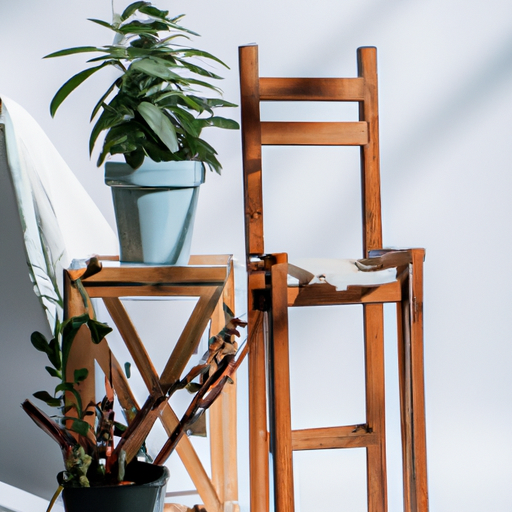
The Importance of Size and Height in Choosing the Right Plant Stand
Choosing the Right Size for Your Plant Stand
When it comes to choosing the right plant stand for your space, size plays a crucial role. The size of the stand should be determined by the size of your plant and the available space in your home or garden. Here are some key factors to consider when selecting the size of your plant stand:
1. Plant Size: The size of your plant should dictate the size of the stand. A small plant will look overwhelmed on a large stand, while a large plant may topple over on a small stand. Measure the height and width of your plant to ensure a proper fit.
2. Space Availability: Consider the available space in your home or garden. If you have limited space, opt for a compact plant stand that can fit comfortably without obstructing foot traffic. On the other hand, if you have ample space, you can go for a larger stand that can accommodate multiple plants.
3. Proportions: The proportions of the plant stand should complement the size of your plant and the surrounding furniture or décor. A stand that is too large or too small can throw off the visual balance of the space. Take into account the overall aesthetics and ensure the stand enhances the beauty of your plant.
Considering Height for Your Plant Stand
Height is another crucial factor to consider when choosing the right plant stand. The height of the stand should be determined by the height of your plant and the purpose it serves. Here are some important considerations regarding height:
1. Plant Visibility: The height of the stand should allow for optimal visibility of your plant. If you have a tall plant, choose a stand that elevates it to a level where it can be admired and appreciated. On the other hand, if you have a smaller plant, a lower stand may be more suitable to ensure it is easily seen.
2. Functional Use: Consider the functional use of the plant stand. If you plan to place the stand in a corner or against a wall, a taller stand can add vertical interest and make the most of the available space. However, if you intend to use the stand as a centerpiece or focal point, a lower stand may be more appropriate.
3. Safety and Stability: Ensure that the height of the stand provides stability and prevents the plant from toppling over. A stand that is too tall and narrow may not be able to support the weight of a larger plant, posing a risk of accidents. Choose a stand with a sturdy base and appropriate height to ensure the safety of your plant.
Matching Size and Height for the Perfect Plant Stand
Now that you understand the importance of both size and height when choosing a plant stand, it’s essential to find the perfect balance between the two. Here are some tips to help you match the size and height for the ideal plant stand:
1. Consider the Proportions: Look for a plant stand that complements the proportions of your plant. The stand should not overpower the plant or get lost in its size. Aim for a harmonious balance where the stand enhances the beauty of the plant without overshadowing it.
2. Measure Carefully: Take accurate measurements of your plant to ensure a proper fit. Consider both the height and width of the plant to determine the appropriate size of the stand. Remember to account for any growth or expansion the plant may undergo in the future.
3. Visualize the Space: Visualize how the plant stand will look in your space. Consider the overall aesthetics and how the stand will interact with other furniture or décor. Will it create a cohesive and visually pleasing arrangement? Take into account the height of surrounding objects and ensure the stand fits seamlessly into the environment.
By carefully considering the size and height of your plant stand, you can create a visually appealing and functional display for your plants. Remember to prioritize the needs of your plant while also taking into account the available space and overall aesthetics. With the right plant stand, you can showcase your plants in style and elevate the beauty of your space.
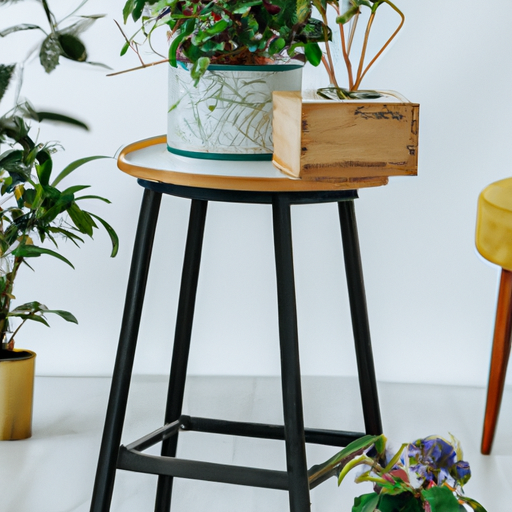
Matching Your Plant Stand Style to Your Interior Design
Introduction
When it comes to decorating your space with plants, choosing the right plant stand is just as important as selecting the perfect plants. A well-chosen plant stand can enhance the overall aesthetics of your interior design while providing a stylish and functional display for your beloved greenery. In this guide, we will explore the importance of matching your plant stand style to your interior design and provide you with a step-by-step process to help you make the right choice.
Understanding Your Interior Design Style
Before diving into the world of plant stands, it’s essential to understand your interior design style. Every space has its unique vibe, whether it’s modern, bohemian, minimalist, or eclectic. Take a moment to assess your existing decor elements, color schemes, and overall ambiance. This will serve as a foundation for selecting a plant stand that seamlessly blends with your interior design.
When it comes to interior design styles, there are numerous options to consider. Here are a few popular styles and their corresponding plant stand recommendations:
1. Modern Interior Design
Modern interior design embraces clean lines, sleek finishes, and a minimalist approach. To complement this style, opt for plant stands with a contemporary design. Look for stands made from materials like metal, glass, or acrylic. These materials exude a sense of sophistication and simplicity that perfectly aligns with modern aesthetics. Choose plant stands with geometric shapes or sleek, straight lines to create a cohesive look.
When selecting colors for your modern interior, consider neutrals like black, white, or metallic tones. These colors will make your plants and stand stand out without overpowering the overall design scheme.
2. Bohemian Interior Design
Bohemian interior design embraces a more eclectic and free-spirited vibe. It often incorporates natural materials, vibrant colors, and an abundance of textures. For a bohemian-inspired space, consider plant stands made from wood or woven materials like rattan or macrame.
Choose plant stands with intricate details or patterns to add visual interest to your space. Embrace the use of vibrant colors for both your plants and stands, creating a lively and whimsical atmosphere.
3. Minimalist Interior Design
Minimalist interior design focuses on simplicity, functionality, and a clutter-free environment. When choosing a plant stand for a minimalist space, opt for clean and understated designs. Look for stands with sleek lines and a neutral color palette. Materials like metal, concrete, or simple wooden stands work well in minimalist interiors.
To maintain a sense of calm and balance, avoid overcrowding your space with too many plants or stands. Instead, choose a few statement plants and display them on carefully selected stands that seamlessly blend with the overall simplicity of your minimalist design.
Conclusion
Matching your plant stand style to your interior design is a crucial step in creating a harmonious and visually appealing space. By understanding your interior design style and considering the materials, shapes, and colors of your plant stands, you can create a cohesive and inviting atmosphere that showcases your greenery in the best possible way. Remember to always choose plant stands that not only enhance your interior design but also provide a stable and secure platform for your beloved plants. Happy decorating!
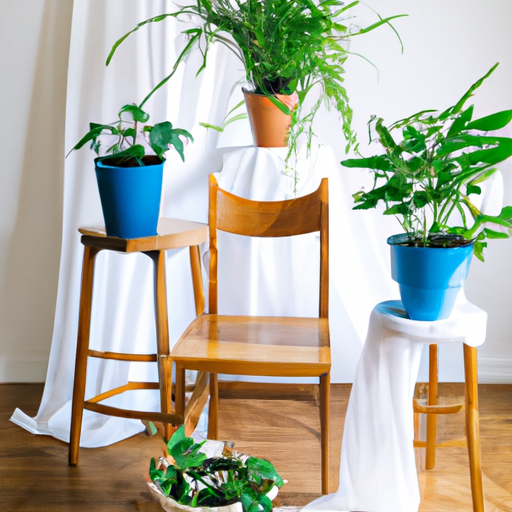
Assessing the Durability and Material of a Plant Stand for Longevity
Choosing the right plant stand for your space involves considering various factors, and one of the most crucial aspects is the durability and material of the stand. A plant stand that is built to last not only ensures the longevity of your beloved plants but also adds an aesthetic touch to your space. In this guide, we will walk you through the steps to assess the durability and material of a plant stand, enabling you to make an informed decision.
Understanding the Importance of Durability
When it comes to plant stands, durability is of utmost importance. A sturdy and long-lasting stand provides a stable foundation for your plants, preventing them from toppling over and getting damaged. Moreover, a durable stand can withstand the test of time, ensuring that your investment pays off in the long run. To assess the durability of a plant stand, consider the following factors:
1. Material: The material used in the construction of a plant stand plays a significant role in determining its durability. Different materials have varying levels of strength and resistance to wear and tear. Common materials used for plant stands include wood, metal, and plastic. Let’s delve deeper into each material:
a) Wood: Wooden plant stands are known for their natural beauty and timeless appeal. However, not all wood is created equal when it comes to durability. Hardwoods like teak, oak, and cedar are highly durable and can withstand outdoor conditions. Softwoods, on the other hand, are more susceptible to damage from moisture and insects. When choosing a wooden plant stand, opt for hardwoods or treated softwoods for enhanced durability.
b) Metal: Metal plant stands, such as those made from iron or steel, are renowned for their strength and longevity. These stands are resistant to rot, pests, and weather conditions, making them suitable for both indoor and outdoor use. However, it’s important to note that metal stands may be prone to rust if not properly coated or treated. Look for stands with rust-resistant finishes or consider applying a protective coating yourself.
c) Plastic: Plastic plant stands are lightweight, affordable, and easy to clean. While they may not be as durable as wood or metal stands, certain types of plastic, such as high-density polyethylene (HDPE), offer good longevity. When opting for a plastic stand, ensure it is made from a sturdy and thick plastic that can withstand the weight of your plants without warping or cracking.
2. Construction: Apart from the material, the construction of the plant stand also determines its durability. Look for stands that are well-built with sturdy joints and reinforcements. Avoid stands with weak or flimsy connections, as they are more likely to break or collapse under the weight of your plants. Additionally, check for any sharp edges or rough surfaces that could potentially damage your plants.
Assessing the Material for Longevity
Now that we have covered the importance of durability let’s explore how to assess the material of a plant stand for longevity:
1. Consider the Environment: The environment in which you plan to place your plant stand plays a crucial role in determining the suitable material. If you intend to keep your stand outdoors, it will be exposed to various weather conditions, including rain, sunlight, and temperature fluctuations. In such cases, materials like metal or treated wood are excellent options. For indoor use, you have more flexibility in terms of material choice.
2. Weight Capacity: Before purchasing a plant stand, it’s essential to consider the weight capacity it can handle. Assess the weight of your plants and ensure that the stand you choose can support them without any risk of collapsing. Overloading a plant stand not only compromises its durability but also puts your plants at risk. Look for weight capacity specifications provided by the manufacturer and choose a stand that exceeds the weight of your heaviest plant.
3. Maintenance Requirements: Different materials have varying maintenance requirements. Consider the amount of time and effort you are willing to invest in maintaining your plant stand. For example, wooden stands may require periodic sealing or staining to protect them from moisture and UV rays. Metal stands may need occasional rust prevention treatments. Plastic stands, on the other hand, are generally low-maintenance and easy to clean. Choose a material that aligns with your maintenance preferences.
Conclusion
Assessing the durability and material of a plant stand is crucial to ensure its longevity and the well-being of your plants. Consider the material options available, such as wood, metal, and plastic, and evaluate their durability based on factors like material strength, construction quality, and resistance to environmental conditions. Additionally, take into account the specific requirements of your space, including the weight capacity needed and the maintenance level you are comfortable with. By following these steps, you can confidently choose the right plant stand that will not only enhance the beauty of your space but also provide a sturdy foundation for your green companions.
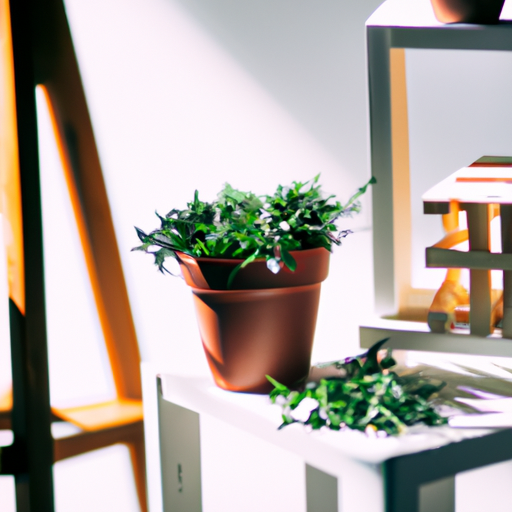
Tips for Selecting the Perfect Plant Stand to Complement Your Plants
Adding plant stands to your space not only provides a functional way to display your plants but also adds a touch of elegance and style to your home or garden. However, choosing the right plant stand can be a daunting task with so many options available in the market. To help you make an informed decision, here are some tips to consider when selecting the perfect plant stand to complement your plants:
1. Consider the Size and Weight of Your Plants
Before purchasing a plant stand, it is important to consider the size and weight of your plants. Different plants have different growth patterns and require varying levels of support. Some plants may have long trailing vines, while others may have tall stems. Ensure that the plant stand you choose can accommodate the size and weight of your plants without tipping over or collapsing.
Additionally, consider the future growth of your plants. If you have young plants that will eventually grow larger, it is wise to choose a plant stand that can accommodate their potential size. This will save you the hassle of having to replace the plant stand in the future.
Furthermore, take into account the weight of the plant and the potting soil. Some plants can become heavy when fully grown, especially if they are planted in large pots. Make sure the plant stand you select is sturdy enough to support the weight of your plants.
2. Assess the Style and Aesthetic of Your Space
When choosing a plant stand, it is crucial to consider the style and aesthetic of your space. The plant stand should complement the overall look and feel of your home or garden. Take note of the existing furniture, decor, and color scheme in your space.
If your space has a modern and minimalist design, opt for a plant stand with clean lines and a sleek finish. On the other hand, if your space has a more rustic or bohemian vibe, consider a plant stand made from natural materials such as wood or rattan.
Additionally, think about the color of the plant stand. You can choose a stand that matches the color of your walls or furniture, or you can go for a contrasting color to create a focal point. Remember, the goal is to select a plant stand that enhances the overall aesthetic of your space.
3. Determine the Placement and Functionality of the Plant Stand
Before making a final decision, think about where you intend to place the plant stand and how you want it to function. Do you want a plant stand that can be easily moved around? Or do you prefer a more permanent fixture?
If you plan to place the plant stand outdoors, ensure that it is made from weather-resistant materials that can withstand the elements. On the other hand, if you intend to place the stand indoors, consider the size and shape of the stand in relation to the available space.
Moreover, think about the functionality of the plant stand. Some stands come with additional shelves or hooks, providing extra storage or hanging options for smaller plants or gardening tools. Assess your needs and choose a plant stand that aligns with your requirements.
In conclusion, selecting the perfect plant stand for your space requires careful consideration of the size and weight of your plants, the style and aesthetic of your space, and the placement and functionality of the stand. By following these tips, you can choose a plant stand that not only complements your plants but also enhances the overall look and feel of your home or garden.
Frequently Asked Questions (FAQ)
How to Choose the Right Plant Stand for Your Space
1. What factors should I consider when choosing a plant stand?
When selecting a plant stand for your space, consider the size and weight of your plants, the available space in your home or garden, the style and material of the stand, and its durability.
2. Should I choose a plant stand with multiple tiers?
Opting for a plant stand with multiple tiers is a great way to maximize space and display multiple plants. It’s especially useful if you have limited floor space.
3. What materials are commonly used for plant stands?
Plant stands can be made from various materials, including wood, metal, wicker, and plastic. Each material offers different aesthetics, durability, and maintenance requirements.
4. How do I determine the appropriate size of a plant stand?
Consider the size and height of your plants when choosing a stand. Ensure that the stand provides enough space for the plant’s roots and allows for proper air circulation.
5. Can I use a plant stand outdoors?
Yes, there are plant stands specifically designed for outdoor use. Look for stands made from materials that can withstand outdoor conditions, such as weather-resistant wood or rust-resistant metal.
6. Are there adjustable plant stands available?
Yes, there are adjustable plant stands that allow you to change the height or width to accommodate different plant sizes. These stands offer flexibility and versatility.
7. How do I ensure the stability of a plant stand?
Check if the plant stand has a sturdy base and legs. Ensure that it has a balanced design and can support the weight of your plants without wobbling or tipping over.
8. Can I use a plant stand for other decorative purposes?
Absolutely! Plant stands can also be used to display other decorative items like vases, sculptures, or even books. They can enhance the overall aesthetic of your space.
9. How do I maintain and clean a plant stand?
The maintenance and cleaning requirements depend on the material of the plant stand. Follow the manufacturer’s instructions for cleaning and use appropriate methods for each material.
10. Where can I purchase a plant stand?
You can find plant stands at various home improvement stores, garden centers, and online retailers. Consider checking out local nurseries or specialty plant shops as well.
Emily Bloomfield is an interior designer and horticulturist specializing in incorporating indoor plants into interior spaces. With a background in both design and plant science, Emily offers a unique perspective on creating harmonious living environments through the synergy of greenery and aesthetics. Her creative ideas and innovative solutions make her a sought-after authority in the field.


